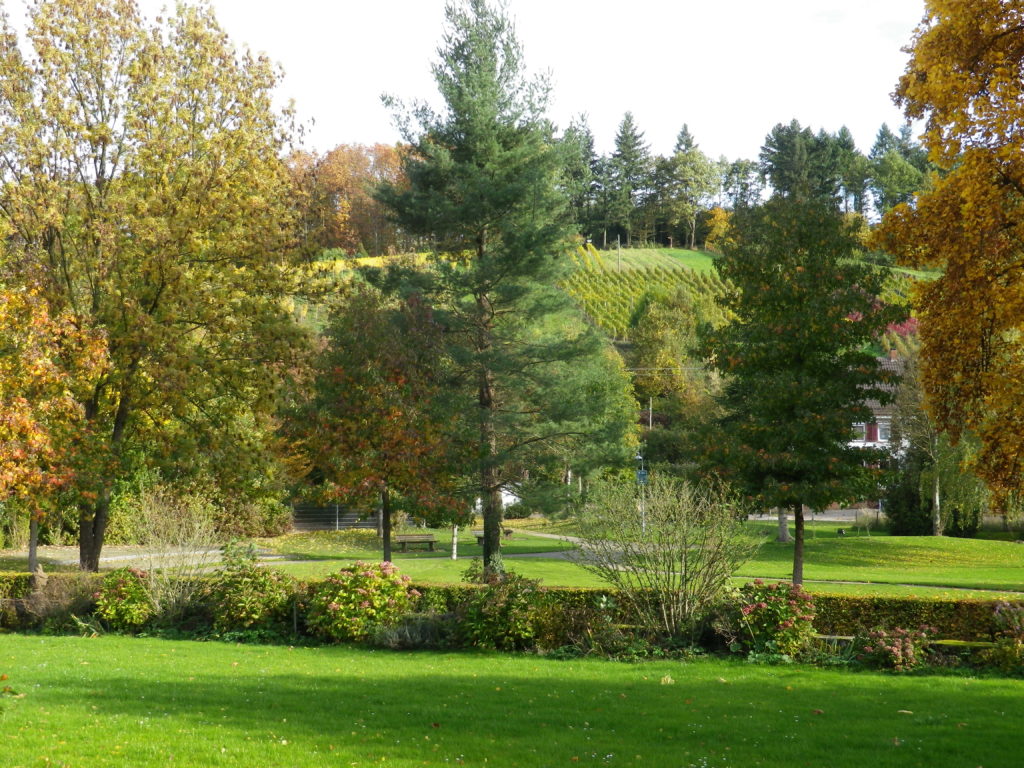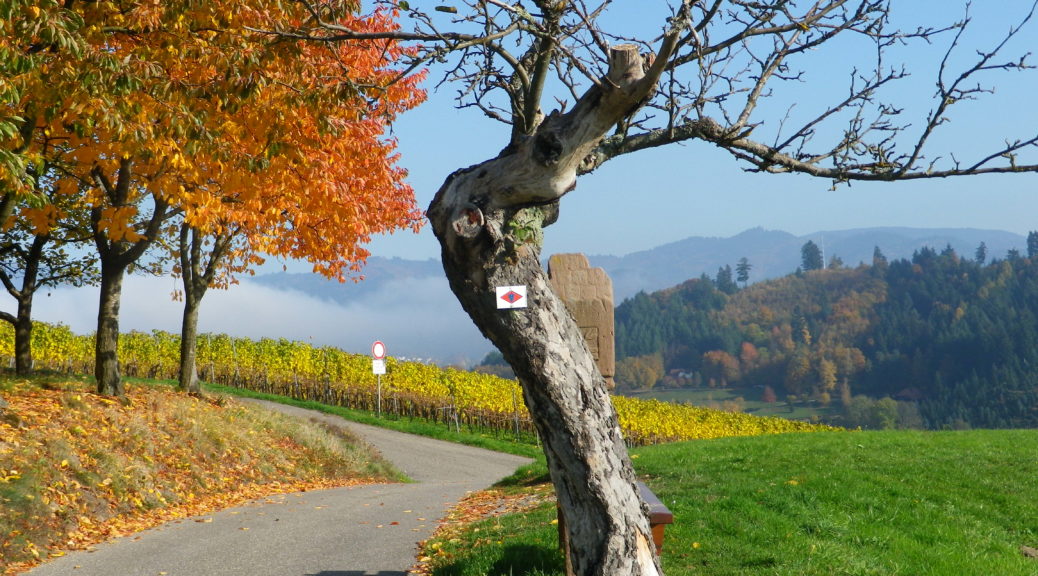Somewhere between Sasbachwalden and Kappelrodeck on the Ortenauer Weinpfad, a sense of enchantment steals over the landscape. The early morning fog, sometimes all-enshrouding, sometimes like wisps of steam from simmering cauldrons, rises from still pools, or solitary copses, magically parting of its own accord to reveal a landscape seemingly suspended in a long-ago time. Such is this region of the Black Forest.
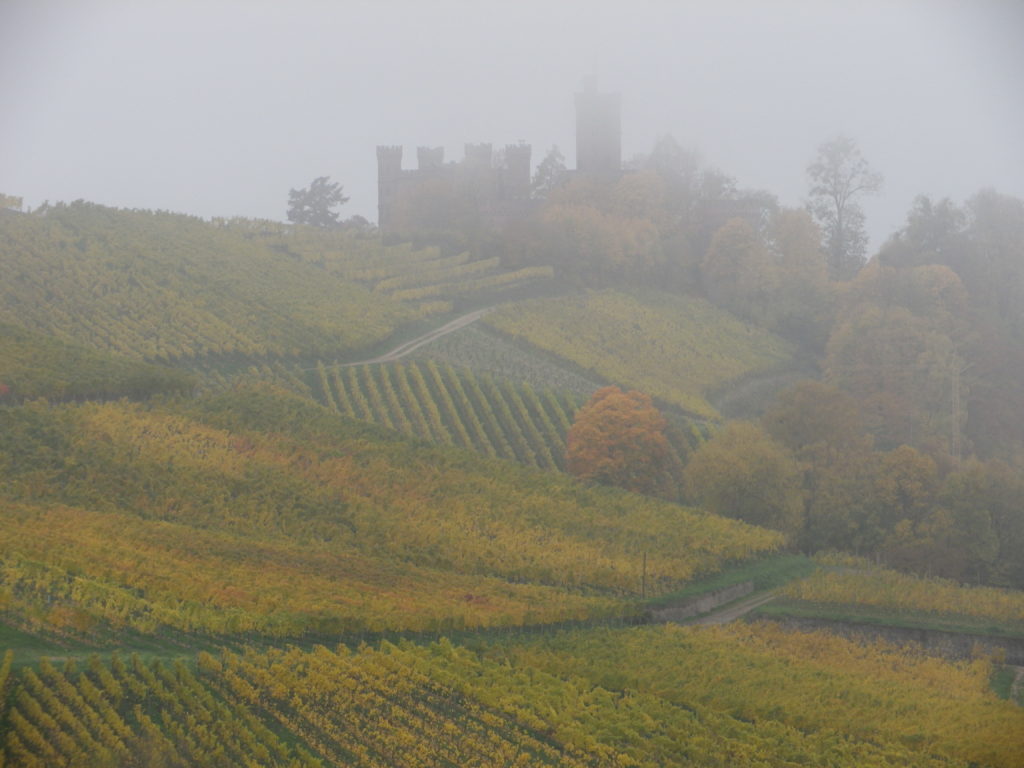
Aside from Sasbachwalden and Kappelrodeck, two other villages seem to capture this mysterious, lost-in-the-mists-of-time atmosphere best. Appropriately, the trail approaches them out of the eerie quiet of the forest, out the dark and into villages where time seems to stand still, in both the figurative and literal senses. The transition is suitably fitting for those seeking such destinations to escape from modern day stressors.
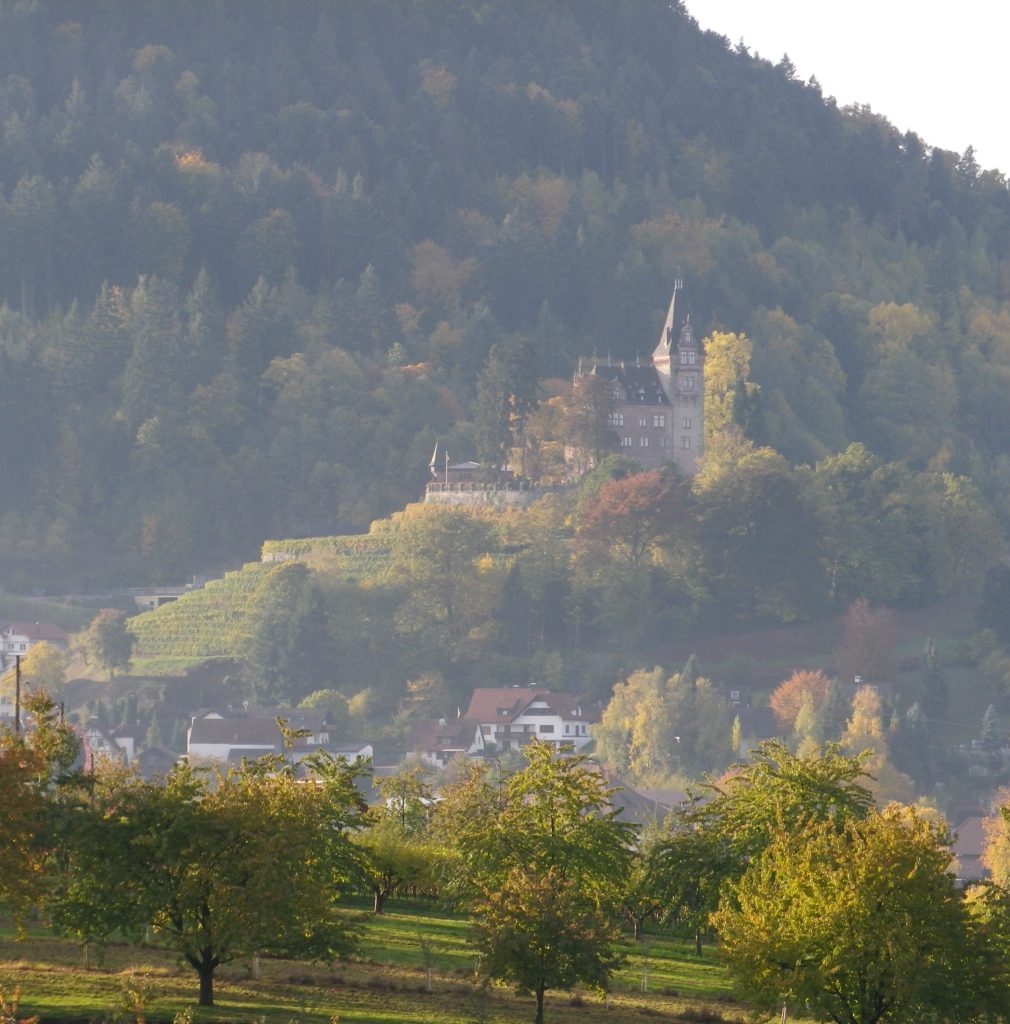
The first village is Durbach, one of my favorites in the Ortenau. Surrounded by steep, peaked hills, covered by vines glorious in autumn color, it is accessed by foot or car through narrow valleys. From the trail onto narrow alleys down the hillside, you reach the one main road through town. In parallel effect, little streams tumble down into the Durbach, which runs along the main road, ultimately reaching the Rhine many kilometers distant. Among its attractions are several hiking circuits, a town pool and a small museum. But best of all are the wineries, several independent ones, three of which have large reputations. The winery Markgraf von Baden at Schloss Staufenberg is one of these, and the trail passes right by it. Situated in the castle perched high above the village, in addition to the winery retail shop, it has a café, and fantastic views to Strasbourg’s cathedral.
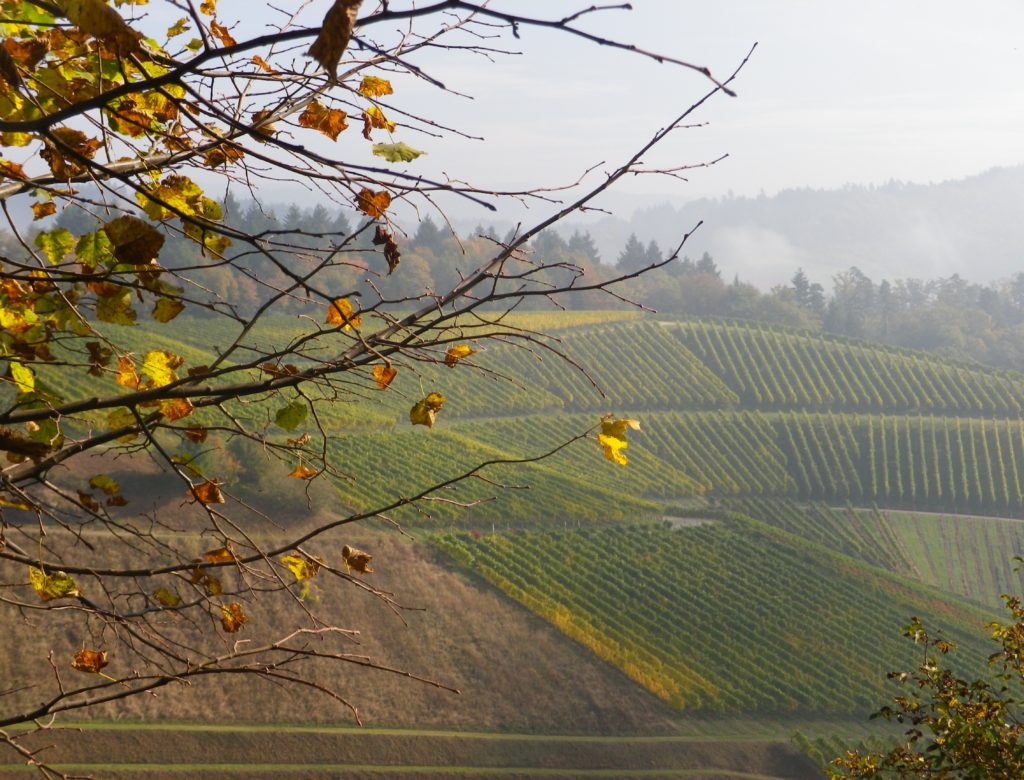
But don’t get me wrong: Even though seemingly ensnared in the past, I found marvelously modern, convenient and up to date tourism infrastructure in this area. Hotels had all the newest mod cons, and WIFI. (I know – defeating the general purpose, but great to have available.) Many restaurants now source locally, and have creatively updated the old German favorites, resulting in newer cuisine with truly fresh ingredients complementing the quality local wines. (Additionally, delicious vegetarian options exist in many places, and a few even offered vegan dishes.) Best of all though, is a relatively inexpensive, and highly efficient local transportation system, that covers a wide area, to include the far reaches of many regional hiking trails. For example, I hiked the Oberkirch – Offenburg/Zell-Weierbach segment of this trail by parking in Oberkirch (where parking is good and the trail passes the train station), taking a train and one local bus to my trailhead that day, and hiking back to my car. The whole public transport time was less than 40 minutes, including a 12-minute wait for the bus from Offenburg to Zell-Weierbach.
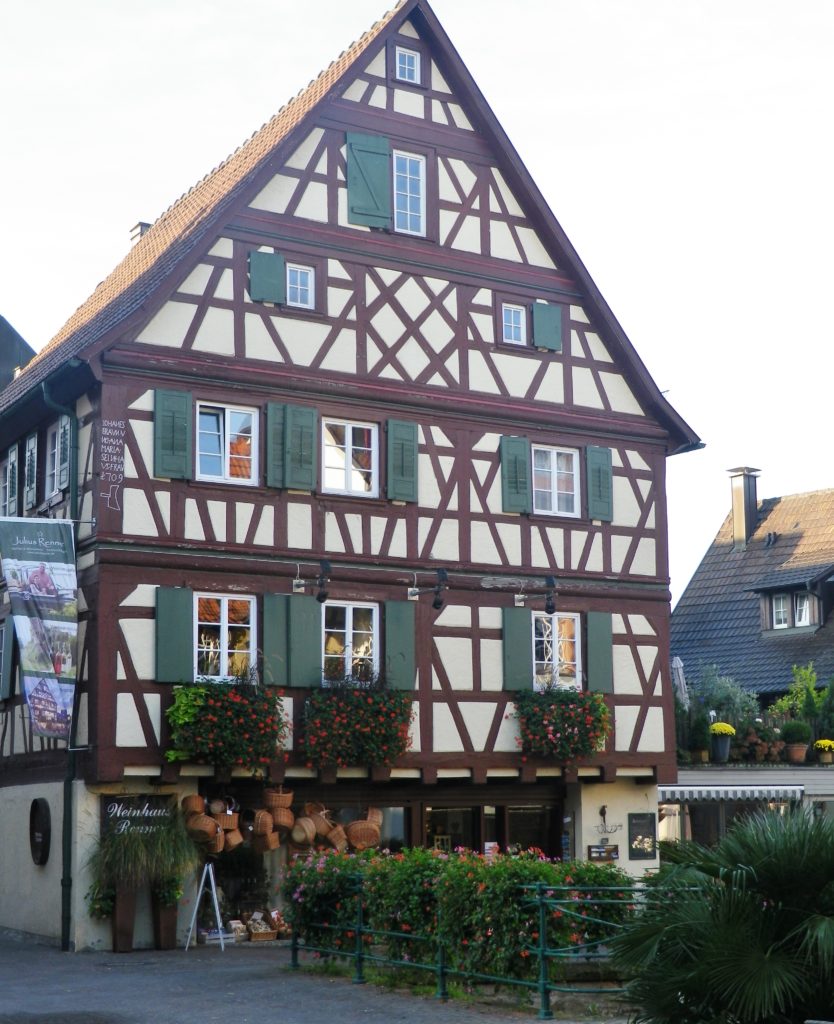
As the Ortenauer Weinpfad approaches Gengenbach, another favorite small town, it meanders along a spectacular walk in vineyards, high above the Rhine Valley, with great views west. Once past the fairy tale castle of Ortenberg, you reach Gengenbach’s Oberturm gate fairly quickly. Walking through its pedestrian entrance transports you back to the late middle ages. The half-timbered houses are festooned with colorful window boxes. In front of the town hall, whose windows are repurposed as Advent Calendar boxes in December, there is an outdoor market selling fruits and vegetables, as well as honeys and soaps, and even cheese and dried meats (often Black Forest ham). The main street leading to the foot of the town hall forks left and right at that point.
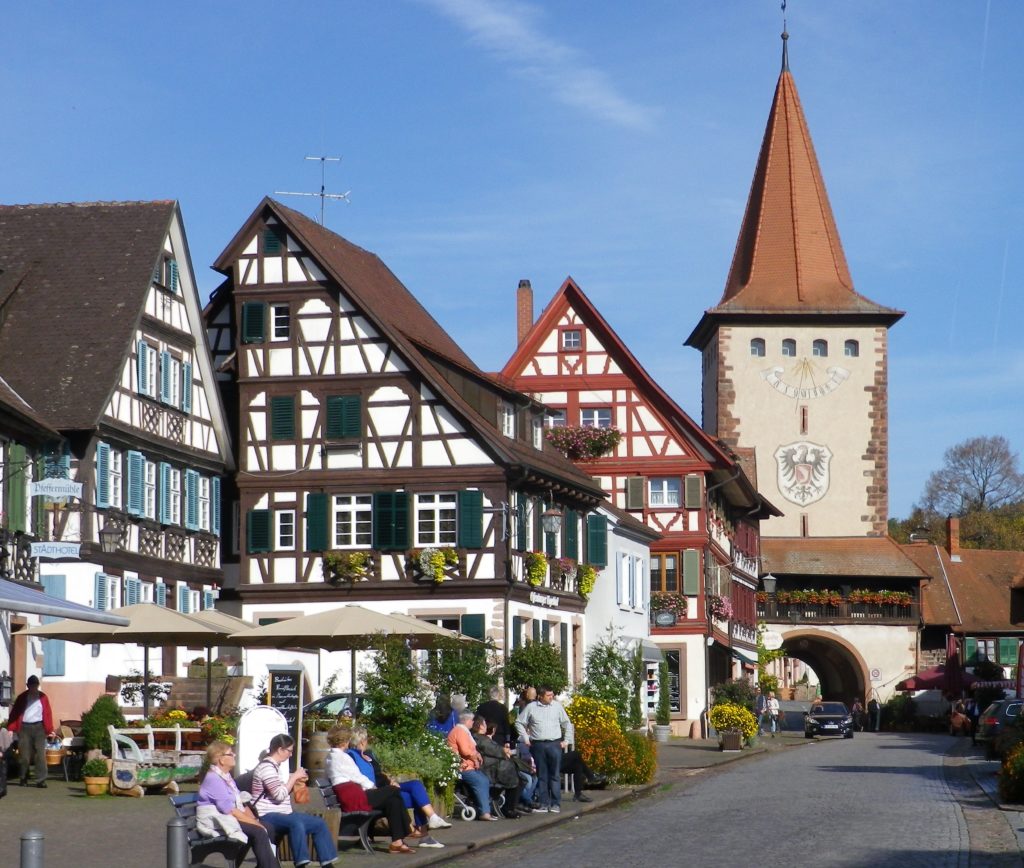
The trail goes to the left, through the towering, medieval Kinzigturm gate, where it crosses the Kinzig river, offering views of the town’s vine-covered hills glowing golden in the sunlight. In the distance, you see the hills to climb out of Berghaupten in order to reach Diersburg and the end of the trail. But don’t hurry out of Gengenbach without seeing a few of its side-streets.
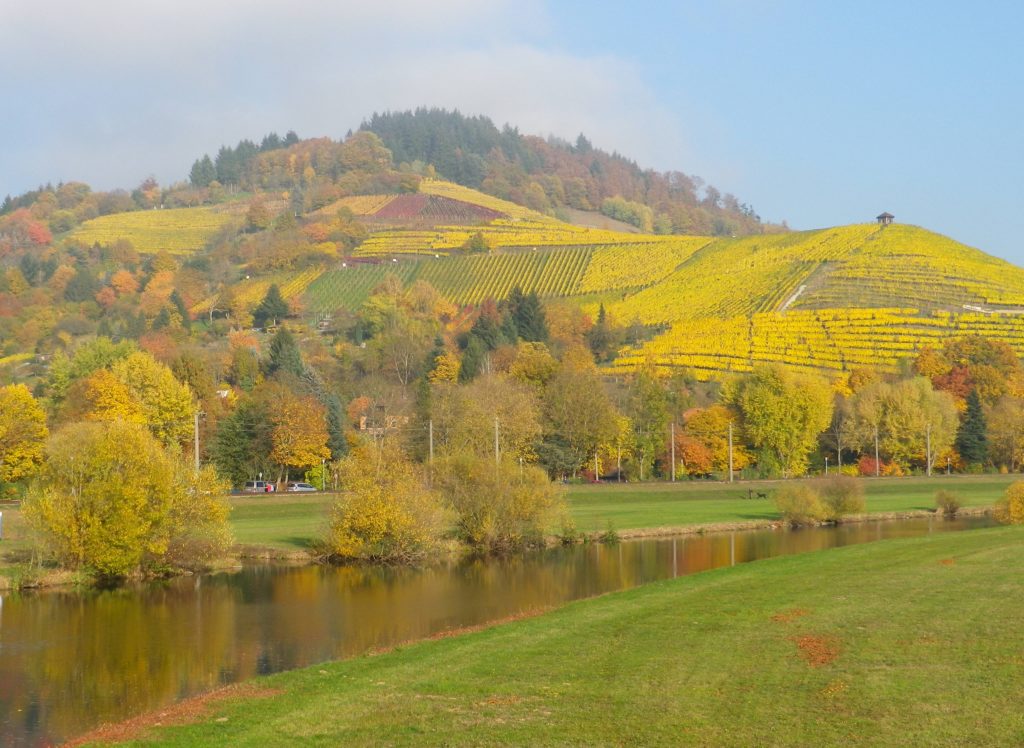
If you go right at the foot of the town hall, you will find that the historic center of Gengenbach is very photogenic. Behind the tourist office a statuary group commemorates southern Germany’s pre-Lenten festival known as Fastnacht. The main figures each represent the traditional costumes of the festival. During the festival, area locals dress in the costumes, and parade through the streets with great noise and outlandish antics, designed to scare away the winter – presumably so the grapes can begin growing again! Nearby taverns offer good food and local wines. Twisting alleyways lead to miniscule squares, fronted by more half-timbered houses with gaily-colored framing.
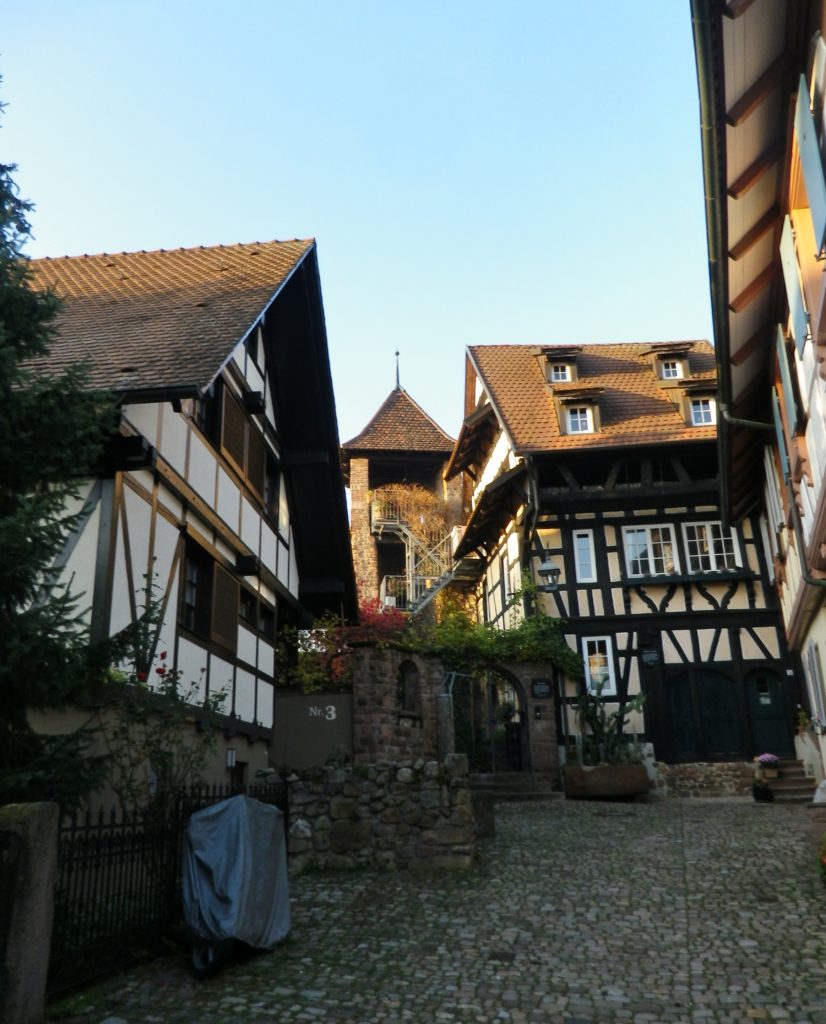
One of the smallest villages on the trail is the last one, quiet Diersburg. It doesn’t merit a train station, nor even a busy bus schedule. It is also fairly remote, reached through a lovely stretch of forest. Therefore, my best friend met me to drive back to Gengenbach, where we explored the town and sampled some of the area wines at one of the wine bars with a captivating appearance, not to mention a large list of regional, quality wines. From there, the wines and the charms of Gengenbach cast their spell over me, and I determined to return another day.
